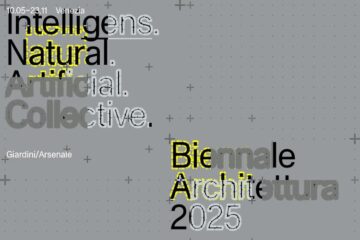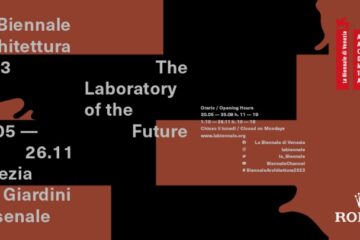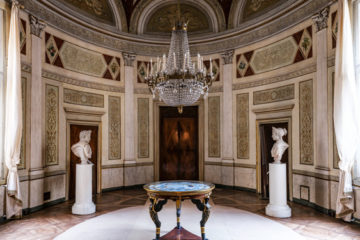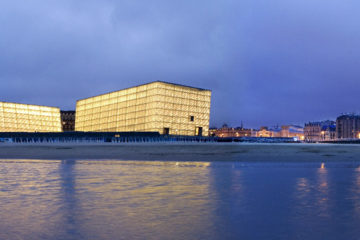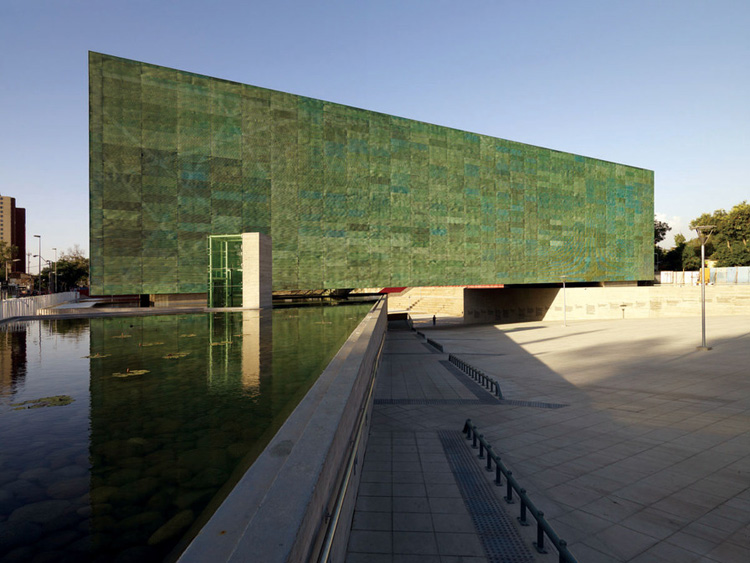
The “Museo de la Memoria y los Derechos Humanos” was built in 2007 in Santiago, Chile, designed by Estudio America architects. The structure of the exposition beam presents itself integrally unique; without concessions it is an evidence of the elevation of memory.
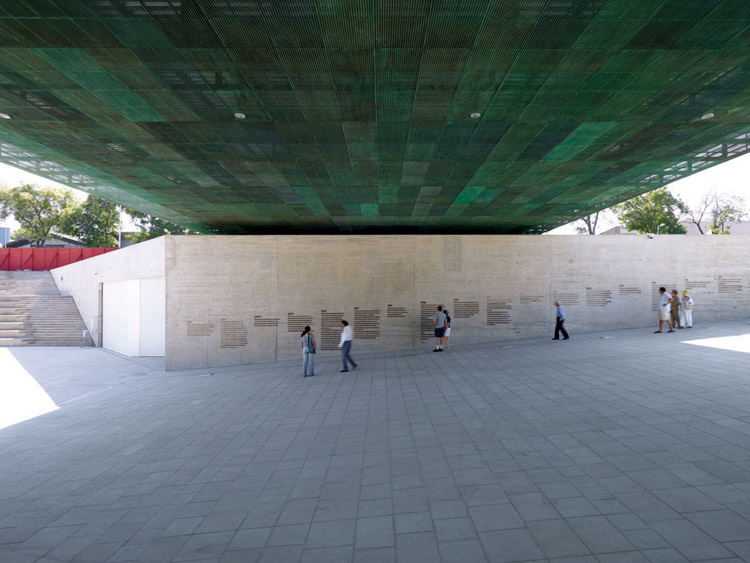
There is an ethereal materiality, like a stone of Magritte. This way, like a tunnel, a metal patchwork presents itself as structure. The support of the elevated building’s body is located in four pillars incorporated to the vertical circulations on each edge. Over this great free span, the translucid exposition boxes, protected by the distance to the lateral borders, guarantee a controlled lighting for the Museum.
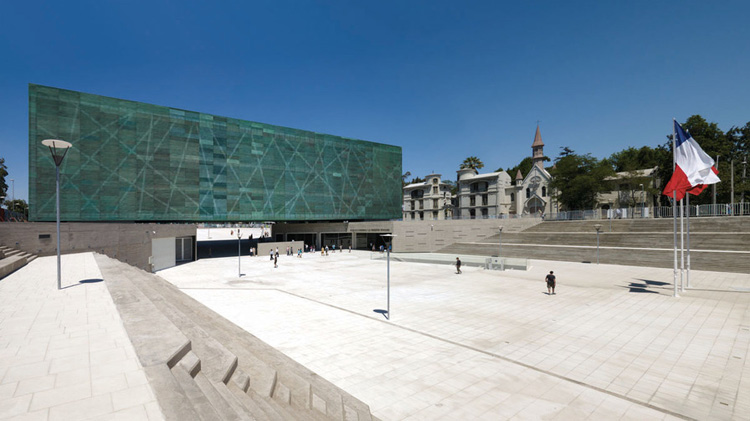
The materiality is also achieved with components that greatly represent the natural products of Chilean territory. The wooden floor generates contrast with the bright tones of the ceilings and the glass walls, paginated in a way that the internal Vierendeel steel beams (main structure) are apparent.
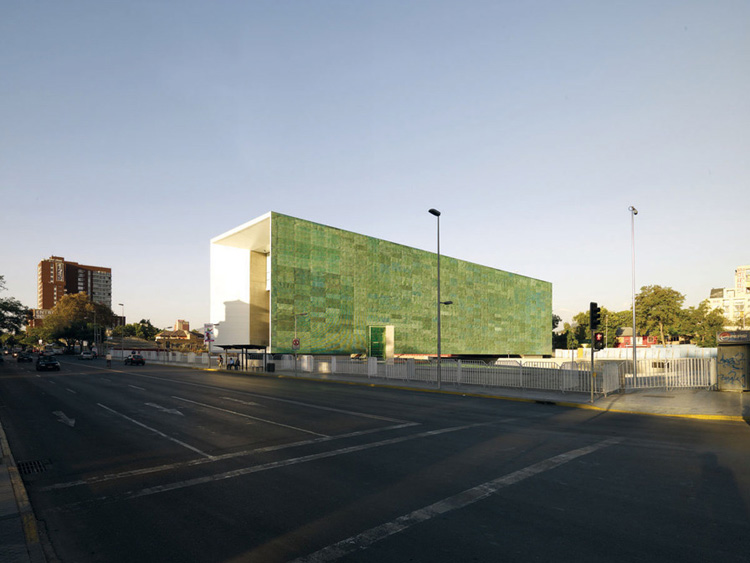
Each part of the exposition space calls the eye to the relation with the city, and the two different views of the landscape. For the external surfaces, copper and coal mark the history of Chilean mining, as a memory of the economy, of doing and of living. The Museum is like a crystal stone which has in its steel the essential carbon for the existence of the human being and nature. Symbolically, the carbon is the register of what has been. It is also the memory of what could have been.
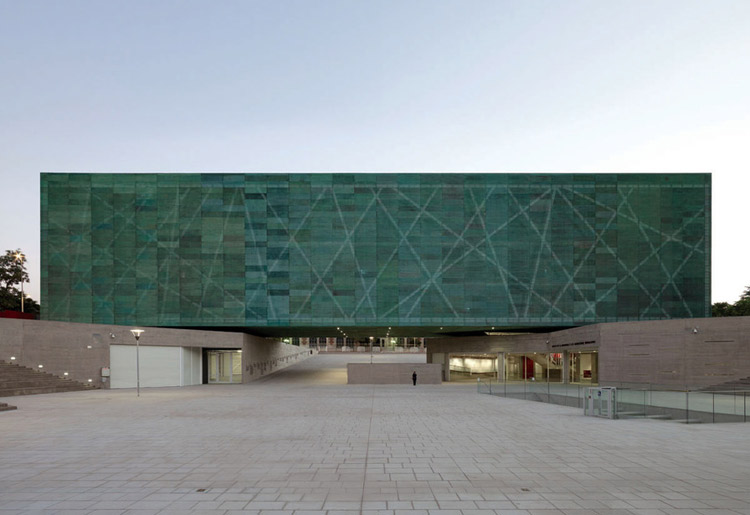
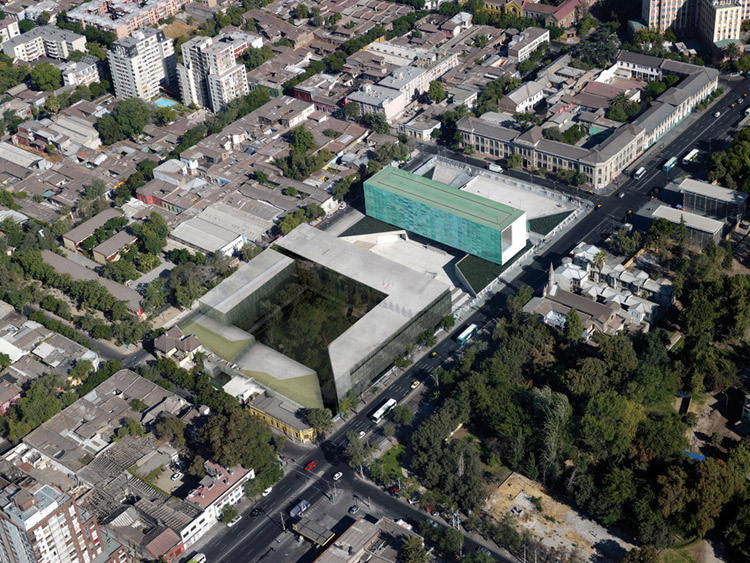
Images courtesy of Nico Saieh
Discover: www.estudioamerica.com
